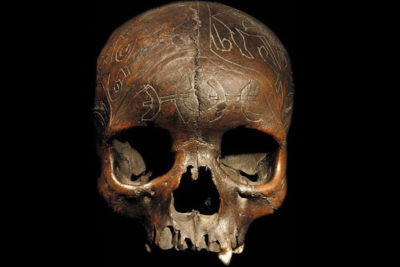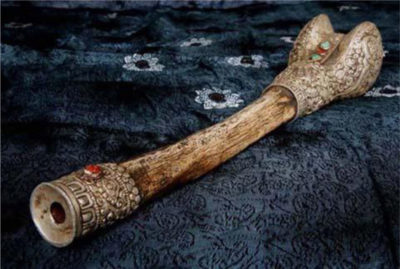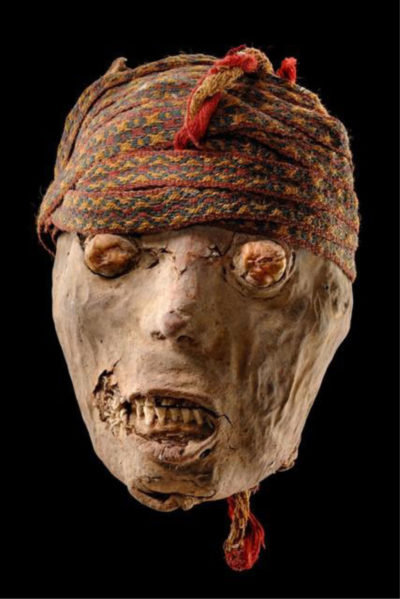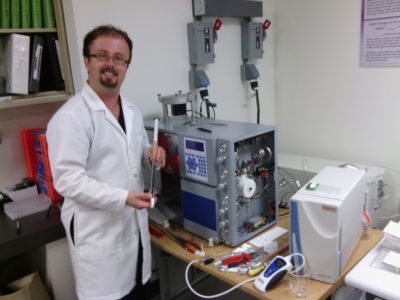Researching a Red Market in the Digital Age

Smithsonian archaeologist to visit Carleton to speak about his work investigating the online trade in human remains on sites like Instagram
These days, it is said that you can find anything online. The research of Dr. Damien Huffer, post-doctoral fellow at the Smithsonian Institution’s Museum Conservation Institute and Department of Anthropology, as well as colleagues at the University of Sydney, University of Technology, Sydney (Australia), and the National Museum of Health and Medicine in Silver Springs, Maryland, USA, certainly adds clout to this theory.
Huffer, who will visit Carleton on October 22-23, 2015 is sponsored by the Department of History and the Institute of Comparative Studies in Literature, Art and Culture, has been collaboratively researching the illicit trade of ethnographic and archeological human remains through online platforms like Facebook, Instagram, and eBay.
The practice of purchasing and selling the physical remains of those who have passed is but a subset of a much larger global emporium of the human body known as the “red market.” The red market includes the sale of everything from human blood, organs and tissues to the trafficking of living human beings. Though there is a significant amount of academic study and effort put towards understanding the illegal channels of commerce used to buy and sell rare antiquities, Huffer explains that much less is known about the shadowy trade of the dead that exists within today’s red market:
“Professor Duncan Chappell (a lawyer and criminologists from the University of Sydney, Australia) and I found there was a gap in the literature investigating this private trade in all types of human remains, so we began to combine our divergent but complimentary skill sets to find out more.”
“We discovered there’s a market for nearly all imaginable kinds of remains – Tibetan Buddhist paraphernalia such as drums and flutes made from human bone, mummies, so-called “trophy skulls,” World War skeletons, etc. are all coveted to one degree or another. Collectors want a piece of authenticated history. It really is the story the sells the skeleton.”

This unethical, oft-times shocking commodification of the dead is heavily sanctioned around the world, but, because there is little legal cohesion from country to country, there are some problematic loopholes in the enforcement of laws curtailing the illicit aspects of this trade. Consequently, many sellers have become quite resourceful in finding methods to move their products, and as demonstrated in Huffer and colleague’s research, hiding-in-plain-sight seems to be one of their preferred avenues. In their recently released paper, The mainly nameless and faceless dead: an exploratory study of the illicit traffic in archaeological and ethnographic human remains, the scholars depict a multitude of instances of how sellers have created online markets through the use of popular social websites like eBay, in addition to galleries and auction houses with a more public face. Considering the vastness of the internet, conducting the sleuth work necessary to track and record these occurrences took a great deal of time and concerted effort. This work has since expanded to Instagram, an unexpected marketplace.
“My colleagues and I would often find ourselves lost down eBay and Instagram rabbit holes. We came to understand that sellers would introduce their auctions online, but would finish the sale offline. There is so much data to analyze and the sellers are crafty. They can make it rather challenging to follow their paths” said Huffer.
Unfortunately, many of these sites rely very heavily on self-reporting from vigilant citizens and thus don’t police this phenomenon efficiently or effectively.

As exemplified by Huffer’s work, when archeology and the internet collide, a lot of new and important questions begin popping up. Professor Shawn Graham of the Department of History and member of the Collaborative MA in Digital Humanities, who was instrumental in bringing Huffer to CU, believes this type of scrutiny is vital for a variety of reasons. “Damien’s work sits at the intersection of archaeology and the digital humanities in that it uncovers ways in which social media has real impact on the ground in the communities he works with. ‘Digital’ sometimes is imagined as existing ‘somewhere else’ – but what Damien’s research shows is that the digital and the material are horribly complicated with each other. There is no ‘virtual world’. There’s just this one!”
Graham also points out that Huffer’s work confronts the increasingly pervasive reality that many of our historical artefacts and symbols are being destroyed for completely illegitimate reasons. “Damien’s research sheds light on a trade that is abolishing our communal world heritage. By fighting this trade, his research restores a measure of dignity to the dead.”
During his visit, Huffer will expand on the illicit trade in human remains and his collaborative work researching the murky regions of the internet. He will also address the realities of conducting archeological work in the online age. Huffer will certainly deliver a prudent and empowering message to the Carleton community.
“I hope to explain that anyone can do the type of research I’m doing. The good thing about the internet is that it is available to anyone, and simply put, we need more eyes watching this problem. There are a lot of terrible things occurring that we can all help monitor,” said Huffer.
Dr. Huffer will be meeting with graduate students and speaking to undergraduate students in the following courses: ‘Introduction to Archaeology’, ‘Historian’s Craft’, and ‘Issues in Digital Humanities.’
If you would like to meet Dr. Huffer while he is visiting Carleton, please email Professor Shawn Graham: shawn.graham@carleton.ca

Dr. Damien Huffer is a postdoctoral fellow at the Smithsonian’s Museum Conservation Institute and department of physical anthropology. His current research uses stable isotope geochemistry to investigate diet and movement over the lifespan, at the community level, and over time; most recently using museum collection from Jordan and Bahrain. He has been involved in excavations around the world, from Vietnam to Arizona, Polynesia to Australia. He also actively researches and tirelessly advocates for the documentation and exposure of the illegal antiquities trade.